 W
WBronc riding, either bareback bronc or saddle bronc competition, is a rodeo event that involves a rodeo participant riding a bucking horse that attempts to throw or buck off the rider. Originally based on the necessary horse breaking skills of a working cowboy, the event is now a highly stylized competition that utilizes horses that often are specially bred for strength, agility, and bucking ability. It is recognized by the Professional Rodeo Cowboys Association (PRCA) and the International Professional Rodeo Association (IPRA).
 W
WA buttero or cavalcante is a mounted herder, usually of horses, of cattle, or of buffaloes, in Italy, predominantly in the Maremma region of Tuscany and northern Lazio, or in the Pontine Marshes to the south.
 W
WA campino is a cattle herder in the Portuguese region of Ribatejo.
 W
WA charro is a traditional horseman from Mexico, originating in the central regions primarily in the states of Hidalgo, Nayarit, Jalisco, Colima, Michoacán, Zacatecas, Durango, Chihuahua, Aguascalientes, Querétaro, Guanajuato and Mexico State. The vaquero and ranchero are similar to the charro but different in culture, etiquette, mannerism, clothing, tradition and social status. The inhabitants of southern Salamanca, the province of Spain, are also called "charros". Among these, the inhabitants of the regions of Alba, Vitigudino, Ciudad Rodrigo and Ledesma are specifically known for their traditional "ganadería" heritage and colorful glitzy clothing.
 W
WThe coaching inn was a vital part of Europe's inland transport infrastructure until the development of the railway, providing a resting point for people and horses. The inn served the needs of travellers, for food, drink, and rest. The attached stables, staffed by hostlers, cared for the horses, including changing a tired team for a fresh one. Coaching inns were used by private travellers in their coaches, the public riding stagecoaches between one town and another, and the mail coach. Just as with roadhouses in other countries, although many survive, and some still offer overnight accommodation, in general coaching inns have lost their original function and now operate as ordinary pubs.
 W
WA cowboy is an animal herder who tends cattle on ranches in North America, traditionally on horseback, and often performs a multitude of other ranch-related tasks. The historic American cowboy of the late 19th century arose from the vaquero traditions of northern Mexico and became a figure of special significance and legend. A subtype, called a wrangler, specifically tends the horses used to work cattle. In addition to ranch work, some cowboys work for or participate in rodeos. Cowgirls, first defined as such in the late 19th century, had a less-well documented historical role, but in the modern world work at identical tasks and have obtained considerable respect for their achievements. Cattle handlers in many other parts of the world, particularly South America and Australia, perform work similar to the cowboy.
 W
WThe csikós is the mounted horse-herdsman of Hungary. The csikós tradition is closely associated with the Hungarian puszta, in recent times particularly in the environs of Debrecen and Hortobágy National Park. It is also closely linked to the Nonius breed of horse, for which one of the two principal breeding centres is the Máta Stud, some 3 kilometres from Hortobágy.
 W
WIn antiquity, the term "apobates" or "desultor" has been applied to individuals skilled at leaping from one horse or chariot to another.
 W
WA farrier is a specialist in equine hoof care, including the trimming and balancing of horses' hooves and the placing of shoes on their hooves, if necessary. A farrier combines some blacksmith's skills with some veterinarian's skills to care for horses' feet.
 W
WA gardian is a mounted cattle herdsman in the Camargue delta in Provence, southern France. The work is akin to that of the Mexican charro, the North American cowboy, the Tuscan buttero or the Portuguese campino. Gardians ride Camargue horses.
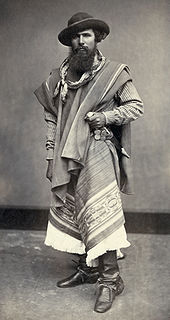 W
WA gaucho or gaúcho is a skilled horseman, reputed to be brave and unruly. The gaucho is a national symbol in Argentina and Uruguay, but is also a strong culture in Paraguay and southern Brazil, Bolivia and Chile. Gauchos became greatly admired and renowned in legends, folklore and literature and became an important part of their regional cultural tradition. Beginning late in the 19th century, after the heyday of the gauchos, they were celebrated by South American writers.
 W
WA groom or stable boy is a person who is responsible for some or all aspects of the management of horses and/or the care of the stables themselves. The term most often refers to a person who is the employee of a stable owner, but an owner of a horse may perform the duties of a groom, particularly if the owner only possesses a few horses.
 W
WThe gulyás is the traditional mounted cattle-herdsman of Hungary. The gulyás tradition is associated with the Hungarian puszta and with the Hungarian Grey or Hungarian Steppe breed of Podolic cattle, Hungarian: Magyar szürke szarvasmarha, now considered a meat breed but formerly used as oxen. Gulyás is the origin of the word goulash.
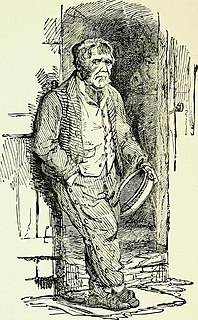 W
WA hostler or ostler is a groom or stableman, who is employed in a stable to take care of horses, usually at an inn. Today the word has acquired additional meanings, particularly in the railroad industry.
 W
WA huaso is a Chilean countryman and skilled horseman, similar to the American cowboy or Mexican charro, the gaucho of Argentina, Uruguay and Rio Grande Do Sul and the Australian stockman. A female huaso is called a huasa, although the term china is far more commonly used for his wife or sweetheart, whose dress can be seen in cueca dancing. Huasos are found all over Central and Southern Chile while the Aysén and Magallanes Region sheep raisers are gauchos. The major difference between the huaso and the gaucho is that huasos are involved in farming as well as cattle herding.
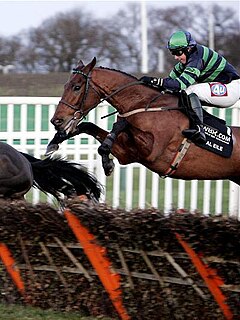 W
WA jockey is someone who rides horses in horse racing or steeplechase racing, primarily as a profession. The word also applies to camel riders in camel racing.
 W
WA llanero is a South American herder. The name is taken from the Llanos grasslands occupying western-central Venezuela and eastern Colombia.
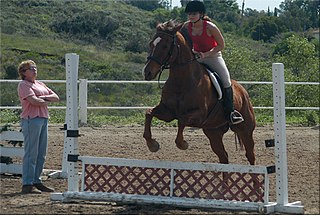 W
WA riding instructor is a person whose job it is to teach methods of horse riding to beginners and improve the intermediate and advanced rider's style and technique. A riding instructor may also serve as a coach for a rider in competition. Some instructors may work out of their own riding facility, others at a riding school or training center. With appropriate academic credentials, some may teach in a college or university equestrian studies program. Yet others freelance and travel from stable to stable.
 W
WA roadhouse or stopping house (Canada) is a small mixed-use premises typically built on or near a major road in a sparsely populated area or an isolated desert region that services the passing travellers, providing food, drinks, accommodation, fuel and parking spaces to the guests and their vehicles. The premises generally consist of just a single dwelling, permanently occupied by a nuclear family, usually between two and five family members.
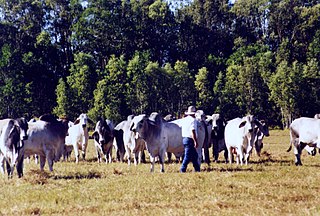 W
WIn Australia a stockman is a person who looks after the livestock on a large property known as a station, which is owned by a grazier or a grazing company. A stockman may also be employed at an abattoir, feedlot, on a livestock export ship, or with a stock and station agency. Stockman is essentially the same word as "cowboy" in Australian English, especially since the cowboy moniker can refer to a tradesman whose work is of shoddy and questionable value, e.g., "a cowboy plumber".
 W
WA strapper is a British English term, mostly used in Australia, for a person holding a position looking after racehorses. The duties range from cleaning out the stables and yards, feeding, grooming and rugging horses, plus saddling horses for track-work and races, hence the name. Relevant vocational qualifications include Horse Care and Saddlery.
 W
WThe vaquero is a horse-mounted livestock herder of a tradition that originated on the Iberian Peninsula and extensively developed in Mexico from a methodology brought to Latin America from Spain. The vaquero became the foundation for the North American cowboy. The vaqueros of the Americas were the horsemen and cattle herders of New Spain, who first came to California with the Jesuit priest Eusebio Kino in 1687, and later with expeditions in 1769 and the Juan Bautista de Anza expedition in 1774. They were the first cowboys in the region.
 W
WIn North America, a wrangler is someone employed to handle animals professionally, especially horses, but sometimes other types of animals as well. The word "wrangler" is derived from the Low German "wrangeln" meaning "to dispute" or "to wrestle". It was first documented in 1377. Its use as a noun was first recorded in 1547. Its reference to a "person in charge of horses or cattle" or "herder" was first recorded in 1888.